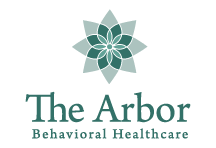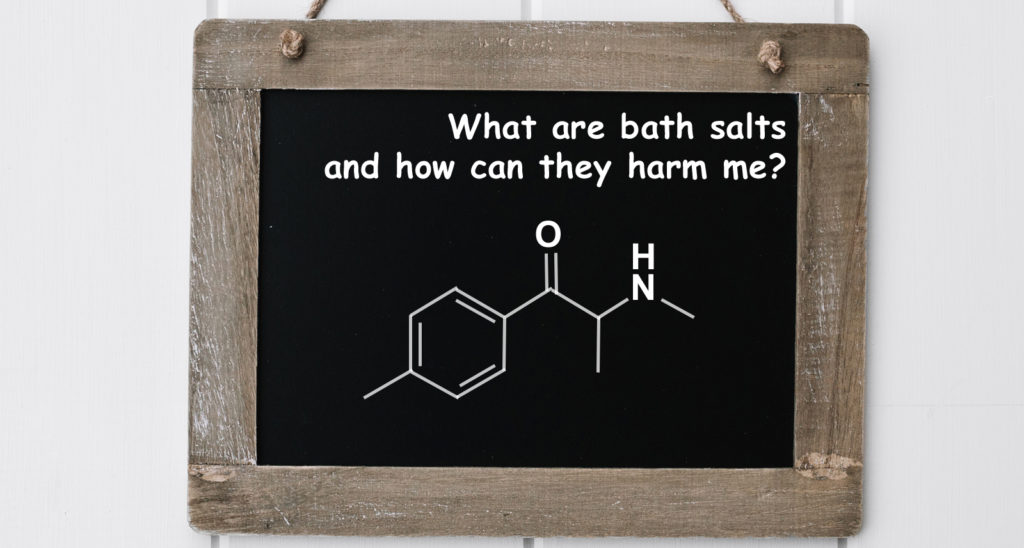Most are familiar with the fragrant, chunky, Epsom salt-based bath salts that are poured into warm bath water for relaxation and invigoration. This type of bath salts is a wonderful product. However, the name ‘bath salts’ has a second definition that is an opposite of the variety above. Bath salts is a broadly used term for a class of designer drugs that closely mimic the effects of illicit substances such as MDMA, methamphetamines, and cocaine. Belonging to a drug group known as synthetic cathinones, these man-made powders are typically brown or white in color. Read on to learn more about bath salts and their effects on users.
Bath Salts by Other Names
This designer drug is referred to as bath salts because of its chunky, rock-like look that closely resembles therapeutic products sold in beauty and health food stores, as well as the legal ability to sell the product under the name. However, as law enforcement agencies become better informed, they are cracking down on sellers and users of bath salts. As a result, people are increasingly seeing these dangerous substances packaged as jewelry cleaner, plant food, and other products, with packaging stating that the contents aren’t fit for human consumption. Bath salts are often referred to by the following names:
- White Lightning
- Bloom
- Red Dove
- Cloud Nine
- Lunar Wave
Depending on the area in which they’re bought and used, there may be additional ‘street names’ as well.
How Long Bath Salts Have Been Available
Since they were first created in France during the 1920s, synthetic cathinones have been used in certain circles. However, they’ve stayed underground, until similar drugs came to prominence in Israel back in 2004. Shortly after, recipes were altered to be sold under various names. Current trends on bath salts started with their use in the UK’s nightclub scene in 2010, and shortly thereafter, America began to see a disturbing trend of use and horrible side effects.
Use, Abuse, and Addiction Issues
According to many users, bath salts cause intense cravings even with one dosage. One recent study found that some synthetic cathinones were even more addictive than methamphetamines. Users say that the drug provides feelings of sexual stimulation and euphoria, much like MDMA (Ecstasy). Furthermore, users often report feeling more focused and energetic for several hours after ingestion. While bath salts are typically snorted, they can also be injected or smoked. Because it’s so easy to buy the drug in smoke shops and other places, users quickly move from recreational use to deep-seated addiction. The ‘crash’ as one comes off the drug is one of the most uncomfortable parts of the entire experience, and many continue to abuse bath salts because they fear the effects of withdrawal.
The Side Effects of Bath Salts
Although bath salts are a fairly new addition to the drug scene, there’s a rapidly increasing incidence of mental health issues in users, with numerous reports of psychosis and schizophrenia. Because it’s impossible to test for the drug, many doctors look for signs of mental decay before diagnosing patients as users of bath salts. Some side effects are like those of other drugs, but more intense. These include anxiety, agitation, depression, feelings of physical illness, and tremors. The side effects may last for several days, and some users have reportedly engaged in self-harming behavior because of bath salts’ severe emotional effects.
Overdose
Many people learned about bath salts because of a news story from 2012, where a Florida man attacked and mauled a homeless man, who lost almost 80% of his face. The drug’s zombie-like effects quickly made headlines all over the world, and the man was said to have overdosed on bath salts while experiencing intense hallucinations and delusions. In addition, overdose may also bring seizures, liver failure, and cardiac arrest. Many users behave violently toward others and themselves, and may self-harm because of an increased tolerance to pain.
Banning the Drugs
By 2011, poison control centers received more than 3000 bath salts-related calls, which was over ten times the total from the previous year. The uptick caused the DEA to act quickly, effectively banning bath salts. The Drug Enforcement Administration exercised its emergency powers to classify the active ingredients in bath salts as Schedule I substances, which makes their sale illegal. The next year, President Barack Obama signed a federal ban on synthetic drugs. Even with the ban, however, the problem hasn’t declined, as people are turning to street dealers in efforts to buy and use bath salts.
Treating Addiction
Because of the unpredictable and severe side effects of bath salts usage, detox is quite difficult for doctors and users alike, and it’s very difficult to find a rehabilitation center willing to treat a user. The main issue is the mental problems brought on by the use of bath salts, and treatment primarily deals with physical detoxification and psychological care. References: https://www.ajc.com/news/local/feds-crack-down-synthetic-pot-bath-salts/13CwpO8YUiHeh72n0ULLyH/ https://www.theguardian.com/society/2011/jul/18/bath-salts-illegal-drugs https://www.livescience.com/38157-bath-salts-addictive.html https://www.mentalhelp.net/articles/bath-salts-and-mental-health/ https://abcnews.go.com/Blotter/face-eating-cannibal-attack-latest-bath-salts-incident/story?id=16470389 https://www.ncbi.nlm.nih.gov/pmc/articles/PMC3474442/ https://www.drugabuse.gov/publications/drugfacts/synthetic-cathinones-bath-salts w.drugabuse.gov/publications/drugfacts/synthetic-cathinones-bath-salts


